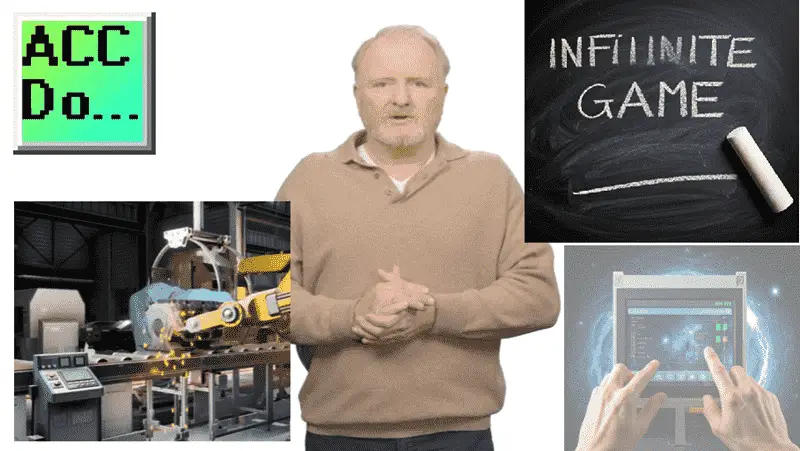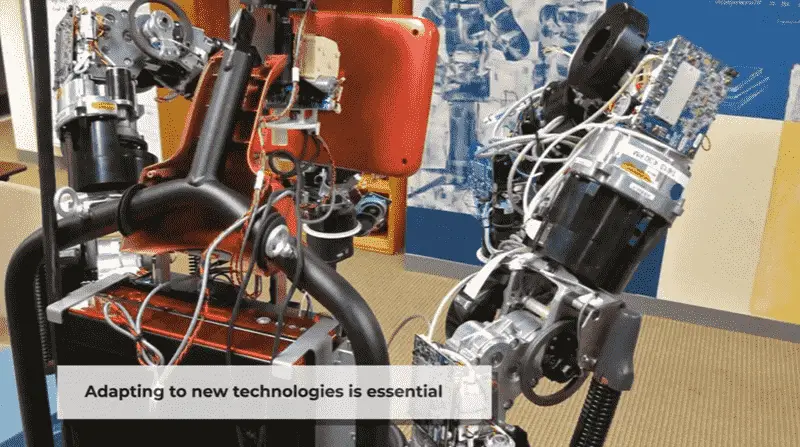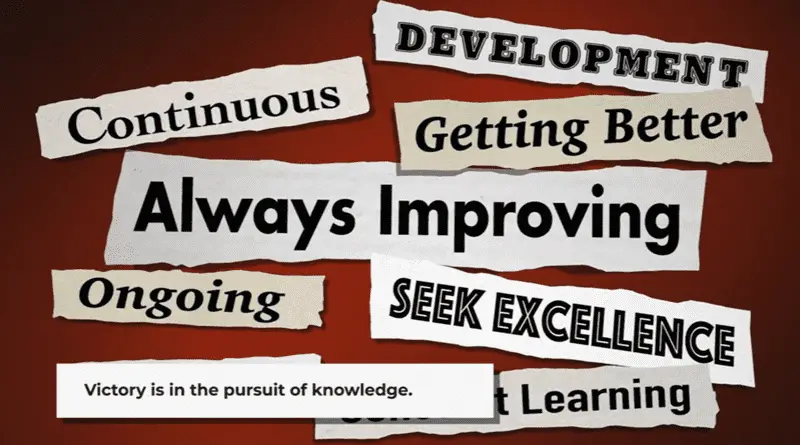PLC programming and automation is an exhilarating game! The relentless pursuit of efficiency and innovation is an exciting journey constantly evolving. Each challenge presents a new opportunity to push the boundaries and unlock incredible possibilities. This adventure embraces the thrill of transforming the future of technology!

In the broad context of human progress, automation and Programmable Logic Controllers (PLCs) have become significant tools that create complex patterns of efficiency and innovation. However, beyond their practical uses, these technologies prompt us to explore a more profound, philosophical viewpoint: that automation and PLC programming represent an infinite game.
What is an Infinite Game?
Coined by James P. Carse, the concept of an infinite game contrasts with a finite game. A finite game has a clear beginning, middle, and end, with defined rules and a defined winner. Examples would include any sporting event. Sports like football, baseball, and tennis each have a set of clearly defined rules that govern gameplay and determine the winner. These regulations ensure fair competition and consistency in how the games are played. For example, in football, the rules dictate how points are scored, while in baseball, specific guidelines outline how innings are played and how teams can earn runs.

Similarly, in tennis, the scoring system and rules regarding serves and faults create a structured environment for competition. By having these established rules, players and teams can understand what is expected of them, making the outcome of each game a result of skill, strategy, and adherence to the sport’s guidelines. In contrast, an infinite game has no fixed end or predetermined victory and is characterized by continuously evolving regulations. There is no winning in automation or PLC programming; the goal is not to win but to keep playing.
Automation and PLC Programming as an Infinite Game

How does this concept apply to automation and PLC programming?
- Continuous Evolution: Technology is constantly evolving, with new hardware, software, and programming emerging to expand the limits of what is possible. Automation engineers must adapt and learn to keep their skills relevant.
- Unpredictable Challenges: Each automation project comes with its own set of unique challenges. Unforeseen changing requirements and unexpected obstacles can arise at any moment during a project. These challenges can disrupt plans and create uncertainty, making it essential to adapt quickly. Thinking creatively and developing practical solutions is crucial for navigating these complexities. By fostering innovative thinking, individuals and teams can explore alternative approaches and perspectives when faced with difficulties. Problem-solving skills not only help us overcome immediate hurdles but also prepare us for potential future challenges. Embracing flexibility and maintaining a positive mindset can lead to more effective outcomes, ultimately ensuring that goals are met despite the unpredictability of circumstances.
- The Pursuit of Perfection: While perfection may be unattainable, the pursuit of it drives innovation. Automation engineers strive to optimize systems, reduce downtime, and improve efficiency.
- Collaboration and Knowledge Sharing: The automation community is a global network of engineers, technicians, and enthusiasts. Sharing knowledge, collaborating on projects, and learning from others is crucial to staying ahead.
The Infinite Game Mindset

To excel in this infinite game, automation and PLC programmers must adopt a specific mindset:
- Embrace Change: Be open to new ideas, technologies, and approaches.
- Lifelong Learning: Continuously seek knowledge and skill development.
- Collaboration: Work effectively with others to achieve shared goals.
- Resilience: Persist in the face of challenges and setbacks.
- Creativity: Think outside the box to find innovative solutions.

By embracing this mindset, automation and PLC programmers can contribute to advancing technology and find lasting fulfillment in their work. The journey may be extended, but the rewards are immeasurable.
What are your thoughts on this perspective? Do you see automation and PLC programming as an infinite game? Share your insights in the comments below.

To this end, look at using Node-RED to expand your horizons. Click here to see how this can be implemented.
Click PLCs now have a mobile application to take your automation to the next level. Click here.
Watch on YouTube: Automation EXPERTS Reveal Secrets to Infinite Game
PLC Beginner’s Guide to PLC Programming
Many different PLC manufacturers use other hardware and software. All of the programmable logic controllers have similar basic features. Here is how I would approach learning about basic PLCs.
Once you are familiar with the basics of the PLC, you will then learn specifics for the controller you will be programming.
This is the easiest way to learn about PLC programming.
Here are the controllers that we have covered or are covering at ACC Automation:
LS Electric XGB PLC Series (IEC Programming)
Arduino Opta PLC
BRX Do-More Series (Do-More Designer Software + Simulator)
Productivity Series P1000 / P2000
Click PLC Series
Omron CP1H Series
Horner XL4 PLC Series
EasyPLC Software Suite is a complete PLC, HMI, and Machine Simulator Software package. See below to receive 10% off this software. This PLC learning package includes the following:
Easy PLC – PLC Simulation will allow programming in Ladder, Grafcet, Logic Blocks, or Script.
HMI System – Easily create a visual human-machine interface (HMI)
Machine Simulator – A virtual 3D world with real-time graphics and physical properties. PLC programs can be tested using the EasyPLC or through other interfaces. (Modbus RTU, TCP, etc.)
Machine Simulator Lite – Designed to run on Android Devices.
Machine Simulator VR – Virtual Reality comes to life so you can test, train, or practice your PLC programming.
Purchase your copy of this learning package for less than $95 USD for a single computer install or less than $110 USD to allow different computers.
Receive 10% off the investment by typing in ACC in the comment section when you order.
Learn PLC programming the easy way. Invest in yourself today.
Additional examples of PLC program development using the five steps.
Click PLC – Easy Transfer Line Programming – Video
Productivity PLC Simulator – Chain Conveyor MS – Video
Five Steps to PLC Program Development – Die Stamping
PLC Programming Example – Process Mixer
PLC Programming Example – Shift Register (Conveyor Reject)
PLC Programming Example – Paint Spraying
PLC Programming Example – Delay Starting of 7 Motors
PLC Programming Example – Pick and Place
PLC Programming Example – Sorting Station (Shift Register)
PLC Programming Example – Palletizer
If you have any questions or need further information, please contact me.
Thank you,
Garry
If you’re like most of my readers, you’re committed to learning about technology. Numbering systems used in PLCs are not challenging to learn and understand. We will walk through the numbering systems used in PLCs. This includes Bits, Decimals, Hexadecimal, ASCII, and Floating Points.
To get this free article, subscribe to my free email newsletter.
Use the information to inform other people how numbering systems work. Sign up now.
The ‘Robust Data Logging for Free’ eBook is also available for free download. The link is included when you subscribe to ACC Automation.


